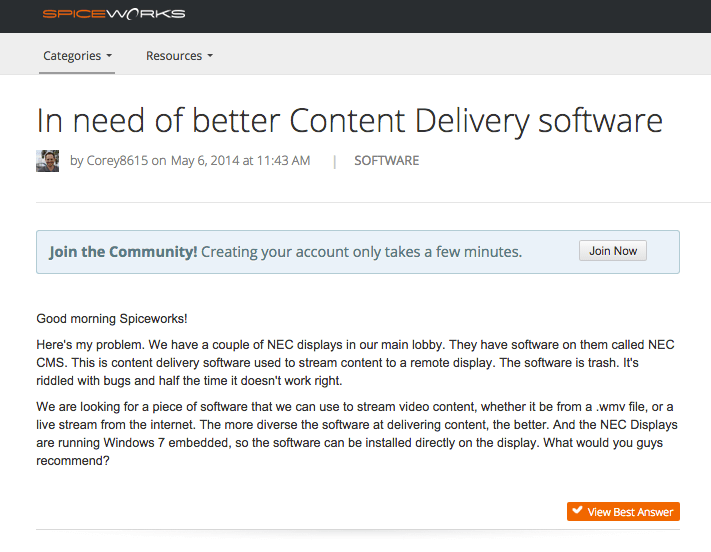How To Build A Customer-Centric Keyword Strategy
Columnist Casie Gillette explains how to tap into the questions prospective customers are asking, learn the language they're using, and use that intelligence to inform your strategy.
It’s no secret that keyword research is an integral part of crafting a successful SEO strategy. After all, keywords provide us insights into our users and help drive our content strategy.
The challenge is that our keyword strategy must evolve as search evolves. Along with the changes in the search results themselves, we as search marketers must also account for the various ways users can search (voice, mobile, desktop), query length changes, and user expectations.
Query Length & Voice Search
Blue Nile Research released a study at the end of April that looked at how individuals searched. While there is a ton of great data in the report worth checking out, what stood out to me was this:
[blockquote]Blue Nile’s research shows an exact 50-50 split between users who search in fragments (e.g. “swollen ankle”) and those who search in more fully formed terms (e.g. “causes of swollen ankle during sleep”). When it came to questions vs. statements, 27% of respondents phrased their query in the form of a question, with “How” being the most commonly used prefix.[/blockquote]
More people than ever are asking questions in search engines, and more people than ever are using longer queries. In fact, the same study showed that 50% of queries were four words or longer.
And then there’s voice search. With mobile officially overtaking desktop as the primary means of search, we must take voice search into consideration. In Greg Sterling’s SMX West presentation, Voice Search and Beyond, he noted the average voice search query is 5-6 keywords.
What does this mean for search marketers?
Users want answers, and they know that the more specific their query, the better chance they’ll have of getting the right results. For marketers, this means that to ensure your page is surfaced as the right result, you must focus your content on phrases and answering questions vs. targeting an exact keyword.
It also means we need to know what our customers are asking — and this means going beyond the Google keyword tool and heading to where our customers actually are.
Customer Support Team
Your customer support team is the eyes and ears of your organization. Unfortunately, for most companies, there’s a disconnect between the support team (who is talking to the customers) and the marketing team (who is marketing to those same customers). That’s a problem.
Whether you’re an in-house SEO or an agency, talk to the people who are answering phones, running the live chat, or answering emails. Find out the following:
- What are the most common questions people have?
- What are the common concerns people have?
- What are people saying about your product or service?
- What aren’t people able to find on the website? Do you have that content?
Each of these questions can help you understand what content may be missing from your site and also may help clarify any existing content. You may find that even though you think you are answering a question, you aren’t answering it in the way your customers are asking for it.
Note: Want more tips on making customer support part of your SEO program? Check out this post that talks keywords, content, and links.
Forums & Communities
Forums and communities are great places to scope out customer lingo and generate content ideas. Sites like Quora and Spiceworks, which allow users to ask and answer questions, give you an immediate look into common issues and questions regarding your product or your industry.
You can see exactly how people are describing your product or service and identify concerns you didn’t even know your customers had.
Take, for example, Client A:
Client A sells a technology product in a fairly competitive market. They were seeing moderate success in driving users to the site who were already progressing in the buying journey, but they didn’t have much top-of-the-funnel content to answer the questions asked by those just starting the buying process.
Enter Spiceworks.
Spiceworks is an IT community and, within it, we found a number of people asking questions about the client’s product and the industry itself. It gave us a direct view into the needs of potential customers and showed us the questions they wanted to be answered.
We took these questions and created articles around each one. The result? A 50%+ organic traffic increase to that section of the client’s site in less than two months. Additionally, we also saw an increase in organic leads as people downloaded more information.
The moral of the story is something we hear just about every day: Understand what your audience wants, and create content your customers are looking for.
Review Sites
Review sites are an underrated keyword research asset. And these things are popping up all over the place, especially for technology products.
What can you gain from them?
Review sites provide an unbiased look into the language used around your product or service. After all, review sites are typically created by people who aren’t involved in your company and who aren’t forced to adhere to brand guidelines when talking about you. This is a good thing!
We’ve surely all worked at or for companies where the language used on the site was in no way the language used by the customer. Perhaps this was because the company execs wanted it described in a certain way. Showing actual customer reviews can help make a case for why the language you are using may not be correct.
To get a sense for the types of keyword phrases being used, and to identify common customer issues, evaluate review sites for the following:
- How is the site describing your product or service?
- How is the site talking about your competitors’ products or services?
- How are the reviewers talking about you?
- What issues do they have?
- What features do they like or dislike?
Turning this information into content can go a long way in not only driving potential customers to your site, but also helping you reach the customers writing reviews or using the various forums/community platforms.
For example, if a customer is asking a question or has a concern and you’ve created the content that addresses it, go back to the site and comment. Give them some insights but also let them know they can find the answer on your site.
Tip: Along with review sites, check out competitor knowledge base or support sections to see what your competitors’ customers are saying.
Final Thoughts
Search behavior is changing and on top of that, we have things like knowledge graph and answer boxes to think about. Make sure that the keyword phrases you’re targeting and the content you’re creating around those keyword phrases is addressing real customer concerns and answering real questions.
That’s how search marketers are going to see success going forward.
Contributing authors are invited to create content for Search Engine Land and are chosen for their expertise and contribution to the search community. Our contributors work under the oversight of the editorial staff and contributions are checked for quality and relevance to our readers. The opinions they express are their own.
Related stories



